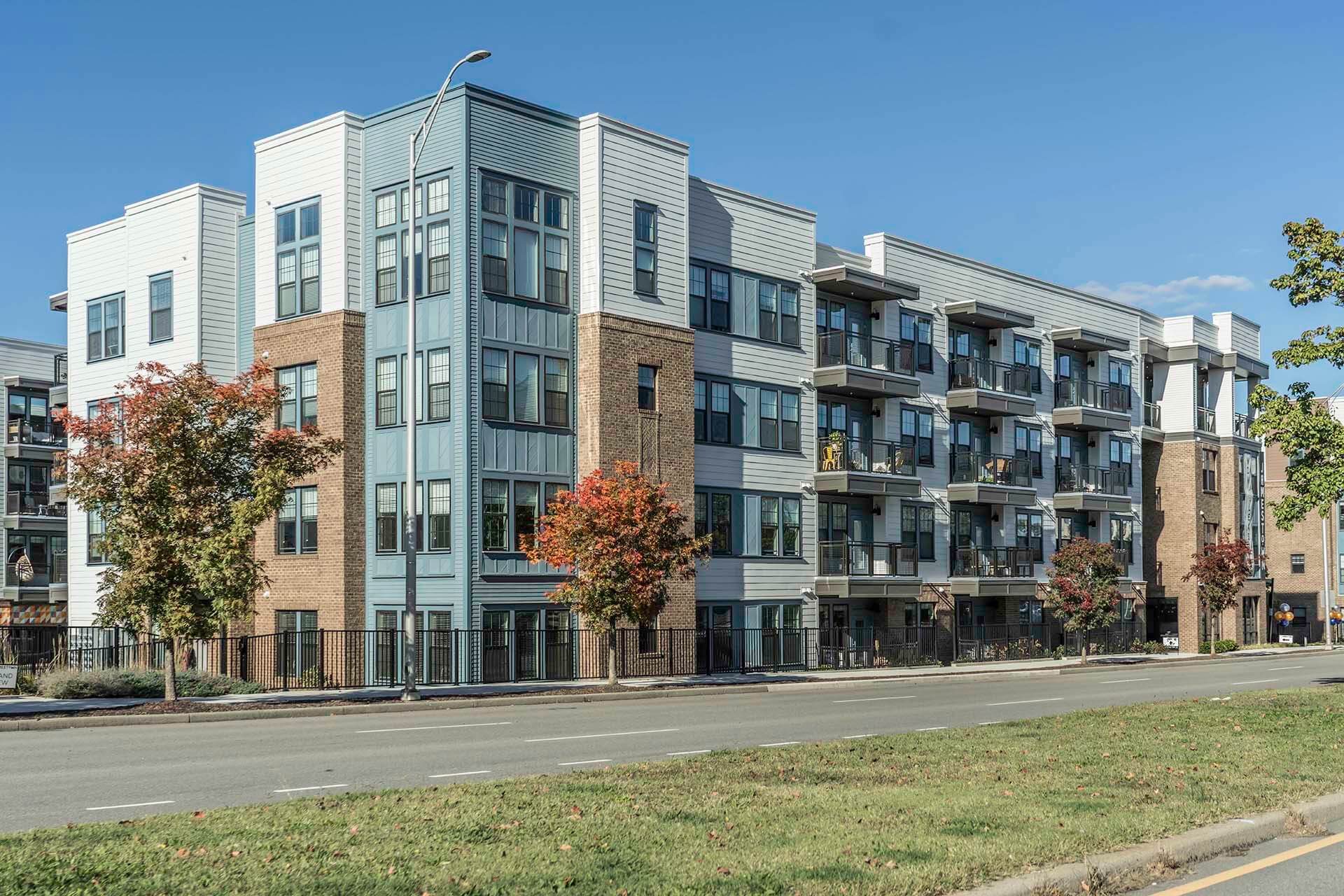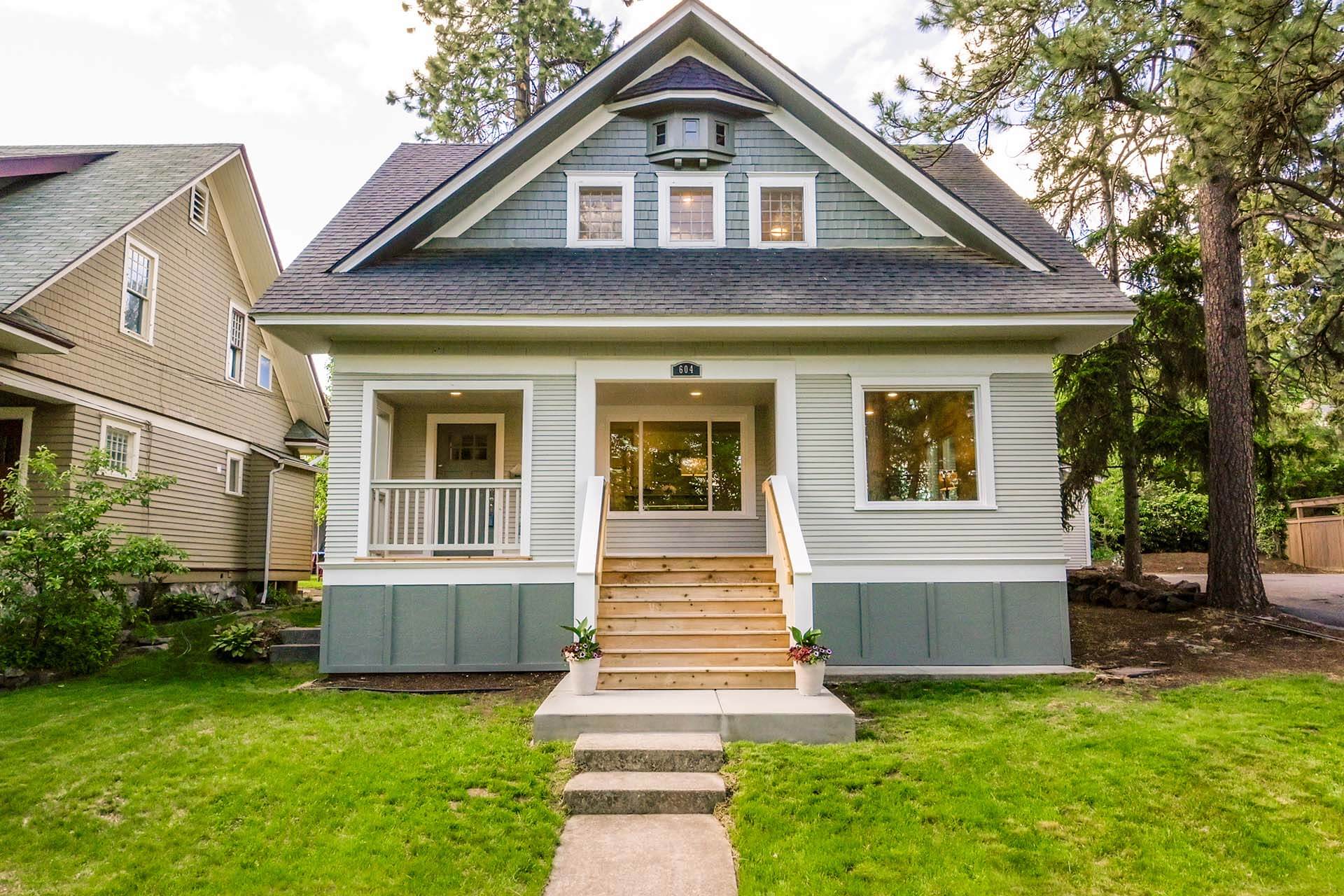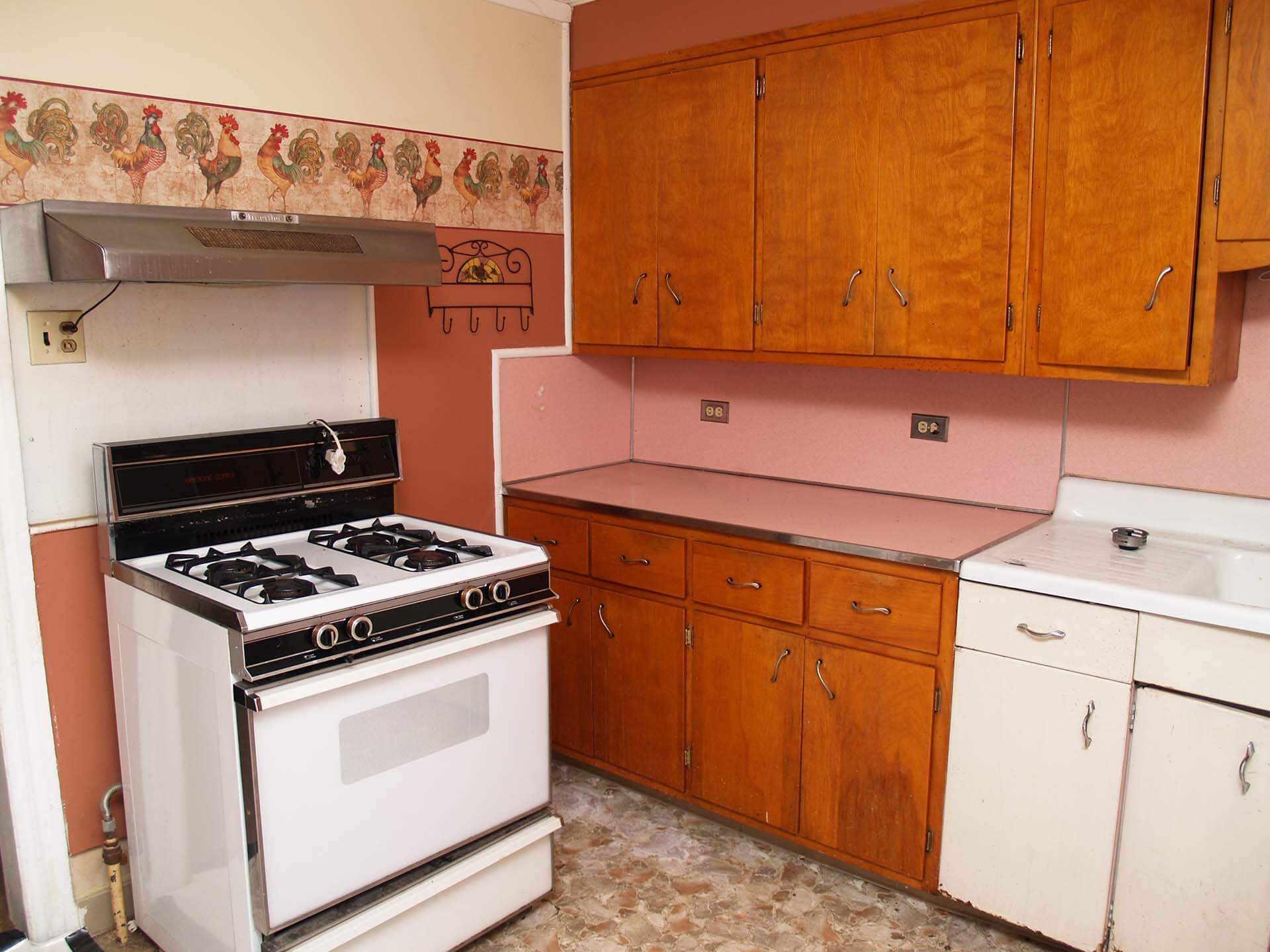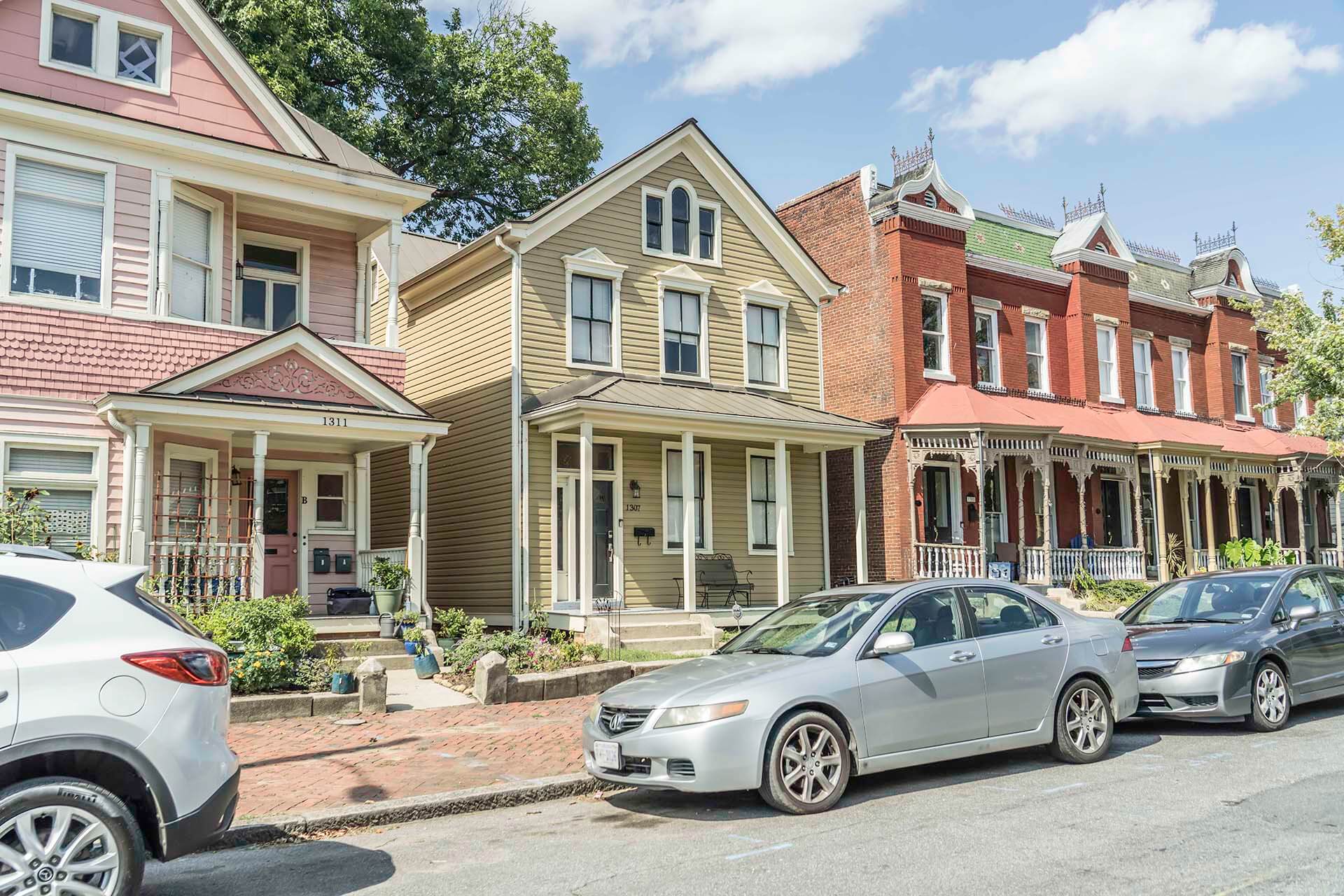Housing Solutions for the Richmond Region

The Regional Housing Framework is an initiative of the Partnership for Housing Affordability (PHA) that serves as a blueprint to advance housing policy in the Richmond region, including Chesterfield, Richmond, Henrico, Hanover, and the town of Ashland.
Below we outline the goals of the Framework and the specific solutions contributing to the success of each goal. For each goal, several solutions are identified as “priority”, as indicated by an asterisk (*). These are the solutions that the region should pursue with vigor. Review the criteria for determining priority status.
Regional Housing Goals &
Proposed Solutions

Goal 1: Increase the Supply of Affordable Rental Housing in the Region.
A healthy housing market depends on an adequate and balanced supply of housing options. The region lacks a sufficient supply of affordable rental homes to meet the growing demand. The result is a large deficit that imposes high housing cost burdens on many households.
Major Findings:
- Since 2009, the percent increase in average rents across the region is double the percent increase in average incomes.
- In addition to a current deficit of 20,000 affordable rental homes, our region will need to provide over a thousand new homes affordable to low-income households per year between now and 2040, based on household growth projections.
- Apart from a few hundred affordable apartments brought online on average annually, nearly all new multifamily apartments in the region are priced out of reach to low-income households.
Solutions
Solution 1-A*
Increase the amount of land available for multifamily housing development in commercial and residential zones, especially in “communities of opportunity.”
Solution 1-B*
Preserve naturally occurring affordable housing through proactive outreach to owners and incentives to retain affordability.
Solution 1-C*
Extend affordability terms for assisted rental developments with expiring subsidies or use restrictions by incentivizing preservation.
Solution 1-D*
Reduce barriers to accessory dwelling units in residential districts.
Solution 1-E
Establish inclusionary zoning programs that incentivize affordable dwelling units.
Solution 1-F
Increase housing choice voucher holders’ success rate in finding high-quality housing.
Solution 1-G
Integrate affordable housing into transportation-rich corridors and neighborhoods.
Solution 1-H
Promote rent skewing in LIHTC properties to achieve deeper affordability and greater income mixing.
Solution 1-I
Implement a “Green-Tape” program to facilitate affordable housing development that is faster and less costly.
Solution 1-J
Prioritize affordable housing as the end use for tax sale and surplus properties disposed of by jurisdictions.

Goal 2: Support Racially Inclusive Wealth Creation by Increasing Homeownership Opportunities for Low and Moderate Income Households.
Homeownership is the most important building block to create wealth among lower income families. More “starter homes” and other low-cost options are required to address this challenge. We must reduce the growing ownership gap between White and minority households.
Major Findings:
- The Black homeownership rate in Virginia is lower today than it was 50 years ago, reflecting the major institutional and structural factors maintaining the racial homeownership and wealth gaps.
- There is an extremely tight homebuying market for smaller, modestly priced starter homes that keeps many from obtaining homeownership.
- As millennials “grow up” and baby boomers seek to downsize, there will be an increased demand for smaller homes available for purchase in denser, amenity-rich neighborhoods.
Solutions
Solution 2-A*
Support and expand the community land trust homeownership model.
Solution 2-B*
Create a regional center for homeownership that is a one-stop resource hub.
Solution 2-C*
Build a region-wide, racially equitable homeownership program.
Solution 2-D*
Reduce land cost per home by encouraging higher density homeownership, including smaller, innovative home types.
Solution 2-E
Increase the number of residential zoning districts where manufactured homes are permitted.
Solution 2-F
Adopt transfer of development rights (TDR) programs to increase housing options.
Solution 2-G
Build smaller, less expensive homes to meet market demand and replace poor-quality housing.
Solution 2-H
Support and expand the regional land bank to create more options for housing development.
Solution 2-I
Increase the number of non-traditional homeownership units across the region (e.g. co-housing, cooperatives, etc.)

Goal 3: Ensure that our Growing Senior Population is Safely and Affordably Housed.
Seniors are the most rapidly growing segment of the region’s population, including the fastest growing component of our homeless population. By 2030, one in four residents of our region will be over the age of 65. Many of these seniors wish to “age-in-place,” but a variety of strategies will be needed to address these needs in the next two decades.
Major Findings:
- The number of mortgage-burdened seniors has more than doubled since 2000—from 7,800 to 16,200. More than one in four senior homeowners are financially burdened by their mortgage.
- Over 70% of all senior homeowners live in a house valued below $200,000, functionally preventing them from moving into new, age-restricted homes that cost more.
- By 2040, the region will need to help 37,000 new senior households age-in-place or find new homes.
Solutions
Solution 3-A*
Promote and expand existing senior tax relief programs for homeowners.
Solution 3-B*
Increase housing rehab, home accessibility and critical home repair assistance programs.
Solution 3-C*
Produce more age restricted housing that serves very low-income seniors.
Solution 3-D
Proactively design and build new accessible housing.
Solution 3-E
Coordinate home assessment services with aging in place improvements.
Solution 3-F
Support and streamline programs for seniors that enable them to better navigate and access housing assistance programs.
Solution 3-G
Expand program linkages with hospitals and healthcare providers.
Additional solutions that help achieve Goal 3

Goal 4: Improve Housing Quality and Ensure Better Health and Safety for Residents.
Thousands of households in the region occupy housing that is unsafe and in disrepair. These conditions typically affect the poorest and most disadvantaged, but the affected stock is also often the most affordable. Rehabilitation and replacement efforts are necessary to ensure a quality home for every household in the region.
Major Findings:
- Thousands of dedicated affordable apartments across the region are over 50 years old and require significant investments to stay safe and up to date, including public housing.
- Many low-income residents in older, unsubsidized “naturally occurring” affordable housing throughout the inner-ring suburbs are at risk of displacement as property values and rents rise. These include over 2,000 mobile homes in manufactured home communities.
Solutions
Solution 4-A*
Improve aging housing stock by expanding resources and access to affordable rehab programs.
Solution 4-B*
Transform Richmond’s aging public housing communities with resident-oriented rehabilitation and replacement.
Solution 4-C*
Revitalize manufactured home communities and replace poor quality homes.
Solution 4-D
Implement holistic code enforcement to preserve and improve existing housing.
Solution 4-E
Pursue implementation of property assessed clean energy (PACE) programs for multifamily and single-family housing.
Solution 4-F
Expand the Green & Healthy Homes Initiative while deepening engagement with the healthcare industry around health and safety in the home.
Solution 4-G
Create and share more detailed housing quality data.
Solution 4-H
Establish data sharing procedures among service providers and community organizations.
Additional solutions that help achieve Goal 4

Goal 5: Expand Housing Stability and Stop Displacement.
The region is growing and housing prices are rising—especially in urban neighborhoods desired by both millennials and baby boomers. Demand for these neighborhoods accelerates displacement of lower income residents.
Major Findings:
- There are 3,600 fewer Black homeowners in Richmond today than in 2000. In Jackson Ward and Church Hill, the number of Black homeowners decreased by roughly 30%, while the number of White homeowners increased by more than 150%.
- Without intervention, over 40% of all of our dedicated affordable rental homes will fall out of compliance (affordability) in the next 15 years.
Solutions
Solution 5-A*
Support eviction prevention pilot in public housing.
Solution 5-B*
Support and monitor eviction diversion pilot program.
Solution 5-C
Provide tax relief for long time neighborhood residents as a strategy to prevent displacement.
Solution 5-D
Explore the use of community benefit agreements with new development proposals.
Solution 5-E
Pilot a “Stay-in-Home” program for low-income senior homeowners struggling to meet their housing costs.
Solution 5-F
Complete a second data collection cycle for the Market Value Analysis to understand and respond to neighborhood changes.
Additional solutions that help achieve Goal 5

Goal 6: Expand Housing Choices for Moderate and Low Income Households.
The region’s housing stock is highly segregated by price and race. Few opportunities exist for lower income families to buy or rent in “communities of opportunity” where there is better access to jobs, transit and schools.
Major Findings:
- Fewer than 1 in 10 of all dedicated affordable apartments are in high-opportunity school zones throughout the region, which prevents children from prospering academically.
- Limited acceptance of housing choice vouchers by rental management companies keeps our region segregated by race and income.
Solutions
Solution 6-A*
Begin an awareness campaign to demonstrate the importance and value of affordable housing.
Solution 6-B*
Implement Small Area Fair Market Rents (SAFMR).
Solution 6-C*
Expand the Move to Opportunity program.
Solution 6-D
Encourage landlords to modify rental screening standards.
Solution 6-E
Encourage CDCs and private developers to develop affordable and mixed-income housing in high opportunity areas.
Solution 6-F
Forge partnerships with anchor institutions to address housing challenges.
Solution 6-G
Undertake a regional fair housing assessment.
Additional solutions that help achieve Goal 6
Resources for Solutions
The region will need to develop additional capital resources, in a variety of forms, in order to implement solutions at the scale necessary to create an impact on housing needs. The approaches contained in this section are proven strategies that have been implemented in Virginia and around the nation. Some have already been put in place in parts of the region.
Resource Solution 1
Grow local housing trust funds / Establish a regional housing trust fund.
Resource Solution 2
Tax “rebate” for affordability.
Resource Solution 3
Provide tax abatement for affordable housing in designated conservation and redevelopment areas.
Resource Solution 4
Collaborative support for a state rental tax credit program.
Resource Solution 5
Issue bonds for housing.
Resource Solution 6
Reduce or waive water/sewer hookup fees.
Resource Solution 7
Tax increment financing for housing.
Resource Solution 8
Voluntary proffers and commercial linkage fees.
Resource Solution 9
Regional affordable housing investment fund.
Resource Solution 10
Regional affordable housing loan fund.
Resource Solution 11
More targeting of federal funds to affordable housing.
*Priority Solutions
- Community input: How frequently did this strategy come up during the community engagement component of this project? Was it one voice or was there consensus?
- Scope of need: To what extent will a strategy address a serious need (e.g., health or safety) with significant scale and reach?
- Critical time frame: Does this strategy address a need where action is needed quickly, or the window for action will close (e.g., displacement pressure in rapidly changing neighborhoods)?
- Regional applicability: Would the strategy have multi-jurisdictional or even regional potential, as opposed to a strategy that is only applicable in one locality?
- Lower income impact: What is the impact this strategy will have on the lowest income households in the region? Often these individuals and families face the most serious and immediate challenges.
- Racial equity: Will the effort significantly address racial disparity in housing opportunities? For example, to what extent might a strategy close the widening homeownership gap between white and black households?
- Level of effort / Cost: Will the strategy be very difficult to accomplish or is it “lower hanging fruit”? Will the strategy require significant new funds or little to no new resources?
- Legislative or regulatory change: Does the solution require a legislative or regulatory change?
